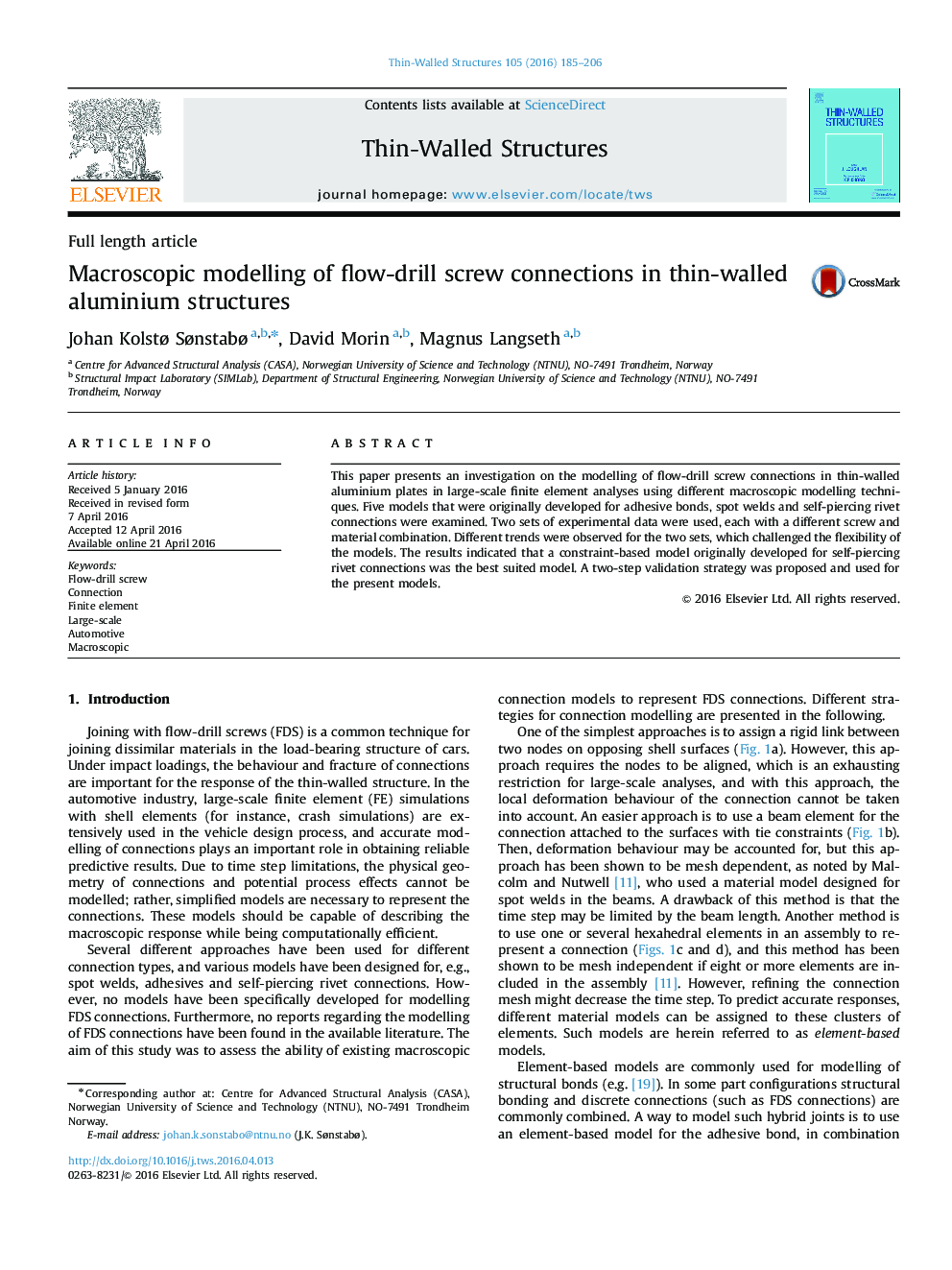| Article ID | Journal | Published Year | Pages | File Type |
|---|---|---|---|---|
| 308305 | Thin-Walled Structures | 2016 | 22 Pages |
•Five macroscopic connection models were evaluated for modelling of FDS connections.•Two element-based models were studied, but lacked the model flexibility necessary.•Constraint-based models gave better results.•A two-step validation strategy was presented and used.
This paper presents an investigation on the modelling of flow-drill screw connections in thin-walled aluminium plates in large-scale finite element analyses using different macroscopic modelling techniques. Five models that were originally developed for adhesive bonds, spot welds and self-piercing rivet connections were examined. Two sets of experimental data were used, each with a different screw and material combination. Different trends were observed for the two sets, which challenged the flexibility of the models. The results indicated that a constraint-based model originally developed for self-piercing rivet connections was the best suited model. A two-step validation strategy was proposed and used for the present models.
